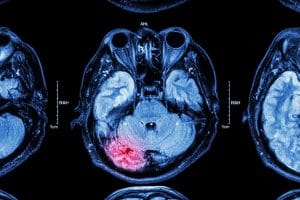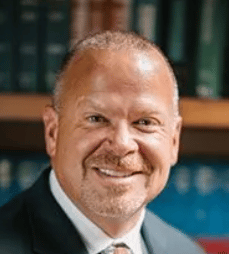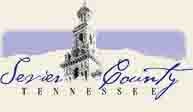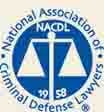 Traumatic brain injuries happen for many different reasons. A TBI is often a consequence of a violent blow to someone’s head. Violent forces can occur during a car accident, when someone falls on someone else’s property, from a construction accident, or other types of accidents. The forces can cause the brain to shake around in the skull. A loss of oxygen to the brain cause death or catastrophic injuries.
Traumatic brain injuries happen for many different reasons. A TBI is often a consequence of a violent blow to someone’s head. Violent forces can occur during a car accident, when someone falls on someone else’s property, from a construction accident, or other types of accidents. The forces can cause the brain to shake around in the skull. A loss of oxygen to the brain cause death or catastrophic injuries.
After a traumatic brain injury, patients often need extensive physical therapy to treat their pain. They also often require emotional therapy to treat depression, anxiety, and other psychological reactions. Another form of therapy after a TBI is cognitive rehabilitation therapy (CRT).
According to Medical News, CRT involves a mix of approaches, including physical and psychological therapy. CRT also involves occupational therapy, speech-language pathology, and neurofeedback.
Generally, there are two approaches to CRT:
- Restorative CRT. This type of therapy involves healthcare providers who work to improve a patient’s cognitive abilities by “reinstating or strengthening the functions a person has either lost or continues to find challenging.” The core idea behind restorative CRT is that with practice (such as ever-increasing difficult memory tests), a brain can improve. Another term for restorative CRT is “neuroplasticity.” The aim of rehabilitative CT is to create new connections “to work around an injury or strengthen existing connections due to repeated use.”
- Compensatory CRT. This type of cognitive rehabilitation therapy helps a patient “work around their injury.” A common example is the use of assistive devices while the patient develops new skills. Compensatory CRT “can also be a long-term strategy when it is not possible to restore a person’s functioning fully.” A few examples include:
- Assistive speech devices for patients who have difficulty speaking
- “Calendars and memory tools for people who struggle with executive functioning”
- “Alarms to regain a person’s attention in certain contexts”
How does CRT work?
There’s no single answer. The aim, though, is clear – for healthcare providers to help patients improve their quality of life after a TBI. Normally, different healthcare providers work together to create a plan that is customized to the patient, in the hopes of restoring “as much function as possible.” For example:
- A speech language pathologist may give the patient “practice words” to say, to help reacclimate the patient to speech.
- A physical therapist may work on specific movements to help the patient’s brain coordinate with his or her muscles.
- An occupational therapist may work with a patient on holding a pencil or a toothbrush, to help with fine motor skills.
When brain function can’t be restored, per Medical News, then assistive devices (normally technical devices) can help the patient communicate. New assistive devices may even help patients move.
A few types of cognitive rehabilitative therapy
- This therapy technique uses brain wave scans “to offer real-time brain feedback.” Based on the feedback, the healthcare providers will recommend certain types of activities.
- Attention processing training (APT). With APT, the patient is exposed to progressively more difficult tasks to help improve their attentiveness. The aim of this therapy is to improve a patient’s attention by concentrating on his/her:
- Focus
- Selection ability
- Ability to sustain their focus
- Alternating what the patient focuses on
- Dividing the patient’s focus
- Computer-assisted learning. Here, certain cognitive abilities can be targeted. For example, computer-based attention games can help a person with memory and attention difficulties.
- Assistive devices. These devices help a patient adjust if he/she loses certain skills. For example, “A person with aphasia (lost speech) following a stroke might use a communication board to share their thoughts and needs.”
A few cognitive assistive devices, identified by the Computer/Electronics Accommodations Program are:
- Memory aids. These help patients by giving them alternate ways to recall information, “such as tasks, appointments or steps in how to accomplish activities.”
- Educational software. This software lets patients receive “digital information in various formats, including multisensory output, mind mapping, and built-in dictionaries for definitions.”
- Speech recognition. This software lets patients use voice commands instead of a keyboard to access programs and apps.
- Voice recorders. These devices let the patient use a microphone to record and save information.
- Word prediction software. Here, the software helps the patient by predicting logical words, restructuring sentences, and improving grammar based on the context of the message.
Where do patients receive cognitive rehabilitation treatment?
According to Brain Line (which references a report from the Institute of Medicine), CRT is not the same as cognitive behavioral therapy, which focuses on treating emotional and psychiatric problems. CRT “attempts to enhance functioning and independence in patients with cognitive impairments as a result of brain damage or disease, most commonly following TBI or stroke.”
Patients can be treated on an individual basis or in group therapy. Some patients need treatment weekly. Others need CRT on a daily basis or an intensive inpatient basis.
CRT treatments are provided at hospitals, outpatient facilities, inpatient rehab facilities, and community brain injury rehabilitation centers. CRT providers include vocational rehabilitation counselors, nurses, and physiatrists.
The treatment for each TBI patient varies. Many patients may benefit from a combination of individual therapy and group therapy. Treatments are often targeted, so that speech therapy focuses on memory and related tasks, while occupational therapy may help the TBI patient with driving and managing their home.
CRT and insurance
According to Brain Line, some private insurance companies may deny coverage because there’s no consensus on what CRT works best. So far, the research on the effectiveness of cognitive rehabilitation therapy is limited.
In TBI accident cases, our lawyers work with your medical team to detail your progress to show that CRT is improving your ability to function. We also work with your physicians, such as your neurosurgeons and neurologists to document the severity of your cognitive losses. We then fight for your right to compensation for the medical expenses associated with CRT.
At Delius & McKenzie, PLLC, we understand how a traumatic brain injury could affect you for the rest of your life. We also understand how family and caretakers can be affected. That is why we will fight to get you the best care possible. Call (865) 428-8780 or fill out our contact form to schedule a free consultation with a respected Sevierville TBI lawyer. We represent accident victims in Sevierville, Seymour, Gatlinburg, Pigeon Forge, and the surrounding Tennessee areas.

Attorney Bryan E. Delius was born and raised in Sevier County, TN. He founded Delius & McKenzie more than 20 years ago, after receiving his JD from the University of Tennessee at Knoxville. He is admitted in Tennessee and in several federal court systems. Learn more about Bryan E. Delius.




